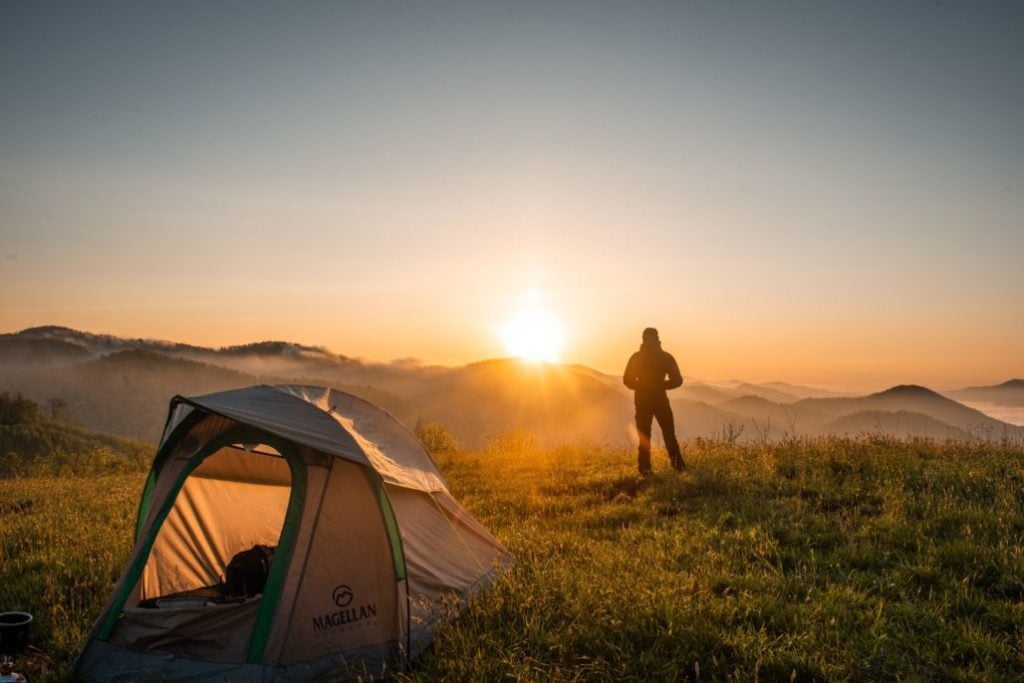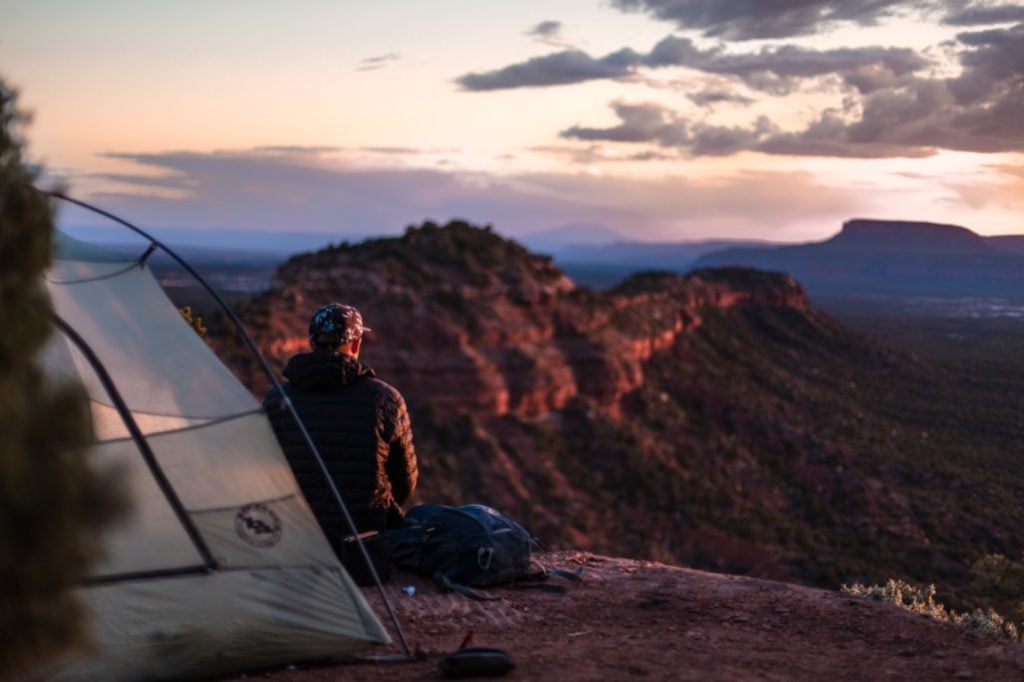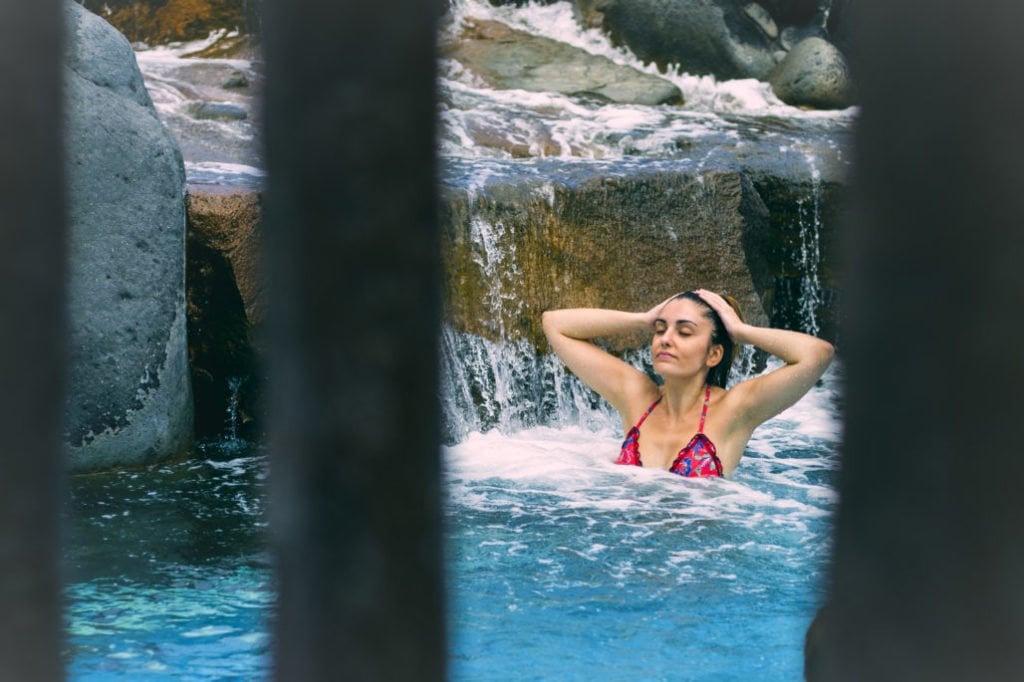Almost everyone absolutely loves camping. It allows you to get away from the city and into the outdoors, which isn’t just fun, it literally helps with mental health! Humans have spent more time outside in the elements than they have indoors, which is absolutely insane to think about.
One of the main questions that comes up when people are new to camping is “how do I stay clean?” On the surface, this concern is a bit laughable. Going camping requires that you accept the fact that you’re going to get a little dirty. But how dirty is too dirty? How do you manage your personal hygiene while you’re camping?
Well, the first thing that you need to know about staying clean while camping is to consistently change your clothes, specifically your socks and underwear. While it might seem trivial, changing those clothing items every day will go a long way in maintaining your personal hygiene throughout your camping trip!

One of the most important things that you can do while camping is changing your clothes. By changing your clothes, you are stripping away a source for harmful germs and parasites from sticking you your body!
This is especially true of socks. Changing your socks regularly can literally be a matter of life and death! Don’t believe me? Let’s look at history to learn about why it’s important to change your socks to stay clean while camping.
During World War I, the fighting was absolutely horrific. Millions of people were killed from bombs and bullets, but what was even more terrible to troop welfare was the fact that they were living in trenches that were constantly full of water and mud.
Even the most waterproof modern boot couldn’t stand up to the conditions that the WWI infantryman had to endure. Every day that the troops were on the front lines, they were living in the muck and water that never drained properly from the trenches. As a result, many couldn’t keep their feet dry!
This resulted in hundreds of thousands on all sides of the conflict to be medivacked off of the frontlines. Why? Their feet had literally been rubbed off!
The condition that disabled so many troops from front line combat was known as “trench foot.” Trench foot occurs when your feet are consistently wet and can result in incredibly sore feet at best and feet literally rotting off the bone at worst!
After so many days of being on the front lines and not being able to keep their feet dry, troops literally couldn’t walk any more due to how painful it was. Some even had to have their feet amputated because of how much flesh had rotted away! In some cases, people died from infections that went untreated.
So please, please, be sure to change your socks when you go camping!
Another great reason to change your clothing is that it gives you an opportunity to check yourself and your camping partners for parasites and bugs that might have attached themselves to your skin.
One of the most common and often overlooked parasites is the tick. Ticks are common almost all throughout the world and can be incredibly harmful if they aren’t addressed quickly.
For example, ticks along the east coast of the US are known to transmit a debilitating disease known as Lyme Disease.
Lyme Disease leaves those who are infected with it with years of dealing with symptoms. Headaches, fever, chills, muscle aches, joint aches, and swollen lymph nodes are all common symptoms that those who have Lyme Disease have to deal with.
If a tick attaches itself to your skin, you have about 36 hours to detect it and remove it before you need to worry about dealing with the risk of a Lyme Disease infection.
When you are changing your clothes, be sure to run your fingers through your hair and all over your skin to detect any ticks that may have attached themselves to your skin. This is especially important after you have walked through a field of grass or through bushes, as those are prime tick habitats.
If you do encounter a tick, be sure to remove it promptly!
- The best way to remove ticks is to use a pair of tweezers.
- Grab as close to the head as you possibly can and firmly pull up in a gentle manner.
- Be patient here. You don’t want to accidentally rip the body away while leaving the head attached.
- If you do, you may accidentally squeeze everything that the tick is carrying into your body, which is what you’re trying to avoid!
- After you have removed the tick, be sure to dispose of it by crushing it or tossing it into a firepit so that it doesn’t reattach to you or anyone else.
- Wash the part of your body that was bitten with soap and water as well as the tweezers and any other surfaces that the tick was in contact with.
Another great reason to change your clothes is that you’ll end up smelling much more pleasant than if you didn’t! But there are some pretty important things to consider when deciding what kind of clothes to bring camping. Are there fabrics you should avoid?
What Kind Of Material Should My Clothes Be Made Out Of?

Not all fabrics are created equal! While you may be tempted to bring along cheap fabrics while camping, you are going to be much better off in the long run by investing some money in some high-quality fabrics.
A big mistake that many beginner campers make is bringing clothes made out of cotton. Cotton is incredibly soft and cheap, which makes it an ideal fabric to use to make clothing. However, cotton tends to not be a great fabric for camping clothes that will keep you clean! Why?
Well, first of all cotton is not hydrophobic, which means that it doesn’t wick away moisture. Cotton absorbs water and that is part of what makes it a terrible fabric for camping. That water is a great home for bacteria that causes stinky odor to accumulate!
Think about it, when you’re camping, you’re likely not going to be standing still or sitting down the entire time. You’ll be moving around, kneeling, standing, squatting, walking, and doing all sorts of physical activity just to get camp set up! Then you throw in doing actual camping activities like hiking, mountain biking, and kayaking and you’ve already done enough to drench your clothes in sweat.
So if cotton isn’t a great fabric for clothing, what is?
Well, one of the best fabrics for camping clothing, especially for top layers, is merino wool. Merino wool is an excellent choice for camp clothing because it is moisture wicking. This helps move sweat and any other water away from your body! By doing so, the wool helps keep your clothes dry which in turn will help them smell cleaner for longer.
Another excellent fabric for camp clothing is polyester. Polyester is a synthetic material that acts very similarly to merino wool in that it is also moisture wicking. Polyester is great material for making pants, shirts, jackets, and just about anything else you can think of for camp clothing!
An additional synthetic fabric that is great for camp clothing is nylon. Nylon, like polyester, is moisture wicking and quick drying. These two things put together help nylon clothing from getting smelly while you camp! Another great benefit to nylon is that it is tear resistant. If you’re doing a lot of camping around rocks and rough surfaces, nylon might be the better fabric to bring along because it’ll last longer than polyester.
But after a few days of camping, you may start to notice that you are still not staying as clean or as fresh smelling as you’d like to. What can be done about that?
Can I Shower While Camping?

The short answer to this one is yes! You can absolutely shower while camping. The long answer is a bit more complicated.
If you camp while using a camper or RV, your showers are going to be much less complicated than those who camp in a van or a tent.
RV’s and campers come equipped with inside showers and in some cases outside showers. Most are in a small tub that have a removable showerhead that can be switched on and off to control the flow of water coming out of the showerhead.
The biggest challenge with showering in a camper or RV is that you can’t take showers like you do while you’re at home. This is because you don’t have access to a seemingly unlimited water source, and you don’t have access to a large water heater. These two factors combined means that your showers need to change.
In order to shower efficiently while using a camper or RV, be sure to follow this procedure so you can clean yourself and save on resources.
- Start the water heater at least 30 minutes before you intend to shower.
- Once you’re ready to step into the shower, make sure that your showerhead is turned off before you turn on the water.
- Turn the water on and adjust the temperature to your preference before turning the valve to switch the water flow from the tub faucet to the showerhead.
- The water should be flowing, but not coming out of the showerhead at this point. If it is coming out of the showerhead, be sure to adjust the showerhead so that it is no longer coming out.
- Step into the shower and begin rinsing yourself by turning on the showerhead.
- Once you have thoroughly rinsed yourself, apply your shampoo and soap to your body.
- After you have lathered yourself with shampoo and soap, turn the showerhead back on to rinse yourself off.
- Now that you have thoroughly rinsed off all of the soap and shampoo, turn off the water and dry off!
By following these steps, you have effectively cleaned yourself, but saved on your freshwater and kept from filling your grey tanks too much.
If you camp in a van or a tent, there are other options for showering while camping. A great thing that you can get is a portable shower stall!
Portable shower stalls set up very similarly to tents in that they have poles and outer material that will allow you to have the full privacy of having a shower outside.
After you have set up your portable shower stall, it’s time to prep your shower! There are portable shower bags that you can also purchase if your shower stall doesn’t come with one. Portable shower bags come in a variety of sizes and colors, but the best ones are usually black.
The reason why black shower bags are the best is because black tends to absorb sunlight better than any other color. By absorbing sunlight, you’re able to use the power of the sun to heat your shower water!
For those who shower with portable showers outside, follow the same procedure mentioned above with camper and RV showers. The part that requires that you turn on the water heater will obviously be replaced by setting your shower bag out in the sun to allow it to heat up. Keep in mind that heating up a shower bag shower is going to take considerably more time than a propane water heater will to heat your shower adequately. Be sure to plan ahead and set your shower bag out well in advance of when you plan on bathing.
Can I Use Natural Water Sources To Bathe In?

While it may seem like a bit of a ridiculous purchase, especially if you’re camping near a body of water, it is absolutely critical not to bathe yourself in the nearby water sources.
There are a few reasons why you want to avoid doing this.
- You can spread disease unknowingly into a drinking source for people and animals.
- You can unknowingly pick up a water borne disease while bathing in a natural water source.
- Walking into a water source, especially creeks, rivers, and streams, can cause harmful erosion.
A better option for using natural water sources to bathe is to take a bucket full of water away from the water source and bathe away from it. This will reduce the chance of you spreading a disease into a water source and potentially picking one up. You’ll also avoid potentially causing unnecessary erosion to the banks of the water source, which can be harmful to the health of the environment over time.
Again, when you consider the fact that if you do it, thousands of others that visit the area will also be allowed to do it. This makes it more understandable that avoiding bathing in natural water sources should be a common practice!
But if you’re unable to use a natural water source to clean up in and you don’t have a shower, how else can you keep clean while camping?
How Can I Keep Myself Clean Without A Shower?

One of the easiest hacks to staying clean while camping is to bring along sanitary wipes. These can be used to give yourself a quick wipe down at the end of each day so that you can stay as hygienic as possible without having to shower.
The best option for these wipes is to bring along biodegradable wipes. While you should still plan on packing them out in a zippered baggie, they will be less wasteful in the long run because they will break down faster than other types of wipes.
If you can’t afford biodegradable wipes or you just can’t find them, baby wipes will work fine here. Be careful to use as few as you can to reduce the amount of waste you produce and always pack out your used baby wipes to be thrown away in the nearest trash can.
And as a last resort, you can absolutely use a wet buff or bandana to wipe yourself down at the end of the day. While it won’t get you as clean as a shower or a baby wipe, you’ll at least be able to wipe away dirt and germs away from your skin, which will keep you cleaner than if you went without the buff bath!
Final Thoughts

Keeping clean while camping is a pretty easy task when you break it down. Start by bringing the right fabrics and bringing enough clothes to last your trip.
After that, you can use your resources in your camper or RV to get clean after spending all day outside. If you don’t have a camper to take a shower in, bring one along with a portable shower stall and bag shower (but leave that bag of water out in the sun for a while so you’re not left freezing cold!).
And if you can’t bring a portable shower, you can always keep yourself clean with sanitary wipes. Just go easy on them or use a reusable piece of gear like a buff or bandana to reduce the amount of waste you produce!
Sharing is caring!


